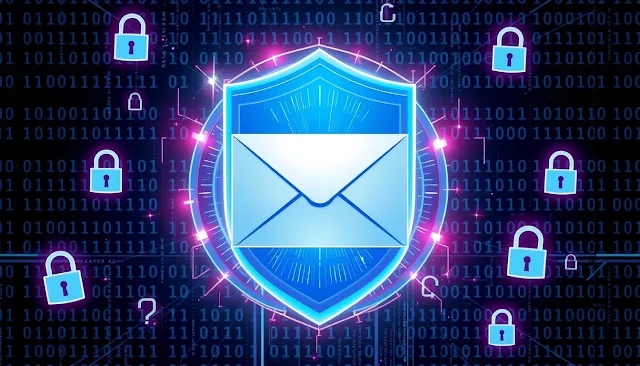SMTP | Simple Mail Transfer Protocol.

SMTP, or Simple Mail Transfer Protocol, is an internet standard that helps exchange emails between servers. It started in the early 1980s and has become a key part of email communication, ensuring reliable message delivery worldwide. It provides a common language for email clients and servers to exchange messages, making it valuable for businesses and individuals. The SMTP setup includes mail transfer agents (MTAs), SMTP servers, and a client-server model. This system allows users to send and receive emails easily, regardless of their location or email service provider. As technology changes, SMTP adaptations continue to improve security and efficiency in email transmission.

SMTP uses standard commands and responses for email delivery, such as HELO, EHLO, MAIL FROM, RCPT TO, DATA, and QUIT. The server responds with numeric status codes to show if a command succeeds. When sending an email, client software connects to an SMTP server that routes the message through the network using SMTP commands. This process determines the most efficient path to the recipient. The delivery process often involves multiple SMTP servers checking the recipient and passing the message until it reaches the inbox. Each server along the way may also perform various checks, such as verifying the sender’s domain and scanning for spam or malicious content. This ensures the email’s delivery, security, and compliance with relevant standards.

SMTP’s history and development influence email standards and modern communication. Its reliability, compatibility, and scalability make it a popular choice for businesses of all sizes. Authentication methods like username and password, SMTP AUTH, and SASL are important for security. To optimize performance, use server monitoring tools, balance email traffic, check server settings, and keep the server updated with security patches. By implementing these best practices, organizations can improve their email systems’ efficiency and protect sensitive information. Regular assessment and adaptation to changing technologies will ensure email communication remains strong and trustworthy.

SMTP is the main email protocol for individuals and businesses today. It differs from POP3 and IMAP in email storage and retrieval. Knowing these protocols helps users choose the best option for their needs. SMTP works well with modern email services like Gmail, Outlook, and Yahoo Mail, making it simple for users to send and receive emails. Additionally, understanding the differences between these protocols can improve users’ email management strategies, allowing for better organization and access to their messages. By using the strengths of each protocol, individuals and businesses can improve their communication workflows and overall efficiency.

Best practices for SMTP server management include regular uptime checks, patch management, performance assessments, and email security. Routine maintenance involves scheduling updates, applying security fixes, and backing up data, along with using monitoring tools to catch problems early. These practices help maintain a strong email infrastructure, prevent downtime, and improve security. Additionally, organizations should train their staff to recognize phishing attempts and implement strong password policies to boost their email security. By promoting a culture of awareness and vigilance, companies can reduce the risk of security breaches and ensure their communication channels remain reliable and protected.

Effective email security involves combining different protocols and best practices. As technology changes, new tools like artificial intelligence (AI) and blockchain could change how we send emails, offering better security and faster service. AI algorithms can spot strange emails, sort spam, and suggest replies, making messages more personal. Blockchain technology enhances email safety and security. By providing a decentralized framework, blockchain can verify the authenticity of senders and prevent tampering with messages during transmission. As these innovations develop, organizations must stay informed and adaptable to make the most of this technology in their email security strategies.

Email trends include better integration with smart home devices and improved encryption for safer communications. SMTP is reliable, flexible, and scales well for businesses of all sizes. It uses ports 25, 587, and 465 for secure SSL/TLS connections. Common SMTP server configuration best practices include proper authentication, load balancing, monitoring, and server maintenance. These practices help ensure smooth and secure email services, reduce downtime, and protect sensitive information. By applying these strategies, businesses can enhance email performance and build user trust. Trust is essential for maintaining customer relationships and ensuring successful communication. As organizations adopt digital tools, prioritizing strong email security measures will be crucial for protecting data and improving overall efficiency.

SMTP server management involves regular maintenance, security updates, and monitoring tools to track performance and identify issues. This keeps the email system efficient and reliable, which is crucial for effective communication. A well-maintained SMTP server can greatly contribute to business success and customer satisfaction. Investing in training for staff on best practices in email use can also strengthen security protocols and improve communication strategies. By encouraging a culture of awareness and vigilance, organizations can better protect themselves against threats while enhancing their ability to connect with clients and partners.
In summary, SMTP’s future includes technologies like AI, blockchain, and IoT, which may transform email protocols and security. Effective management of SMTP servers is key to maintaining a strong and efficient email system, directly impacting business success and customer satisfaction. This ongoing change will require organizations to stay adaptable and proactive, ensuring their email systems meet current standards and anticipate future challenges. As digital communication advances, embracing these innovations will be essential for maintaining a competitive edge and building trust in customer relationships.

SMTP is important for email communication, allowing users to send and receive emails from their domain. It ensures reliable delivery and prevents spam. When choosing an SMTP provider, consider factors like delivery rates, scalability, security options, customer support, and pricing. Additionally, evaluate the provider’s ability to integrate with existing systems and their responsiveness to new technologies. By prioritizing these aspects, businesses can ensure a seamless email experience that boosts overall communication effectiveness.
Setting up an SMTP server means installing Sendmail or Postfix. It also involves configuring the domain and IP, adjusting SMTP settings, adding an email account, testing the setup, and monitoring the server. Secure email protocols are essential, and SSL/TLS encryption is a common choice. Authentication is also critical in SMTP, allowing only authorized users. Common methods include PLAIN/LOGIN, CRAM-MD5, OAuth 2.0, and IP whitelisting. By implementing these security measures, you can greatly reduce the risk of unauthorized access and ensure that sensitive information stays protected. Additionally, regular updates and monitoring of the server will help maintain its integrity and performance over time.

Common issues and troubleshooting with SMTP include understanding error codes that reveal specific problems. Troubleshooting tips involve checking email settings, reviewing network configurations, testing different ports, inspecting authentication, checking for ISP blocks, using tools like telnet, and monitoring server status. By proactively addressing these potential issues, you can ensure smoother email communication and improve overall system reliability. Keeping thorough documentation of configurations and changes can help future troubleshooting efforts and support continuous improvement.
SMTP continues to adapt to meet the latest standards for secure and reliable email delivery. It integrates secure protocols like TLS and modern authentication techniques like DMARC and SPF to enhance security and efficiency. Despite new technologies, SMTP remains essential for businesses and personal use. Digital communication relies on its strength and flexibility to transmit messages across various networks. As organizations increasingly rely on email for critical operations, understanding and optimizing SMTP settings will be vital for maintaining effective communication strategies. Staying informed about emerging threats and best practices for email security will empower users to protect their communications against vulnerabilities. Investing in training and resources related to SMTP can greatly improve overall email management and protection.
In conclusion, understanding SMTP is key to securing interactions and protecting sensitive information. Optimizing email delivery involves simplifying the technical aspects of SMTP and using best practices for security. Implementing encryption like TLS prevents unauthorized access to messages. Using proper authentication methods like SPF and DKIM verifies emails’ legitimacy and lowers phishing risk. As cyber threats change, communication strategies must also adapt. Regularly monitoring bounce rates, unblocking domains, and keeping a clean contact list will improve delivery. These preventative measures strengthen the reliability of email communications and build trust among recipients.